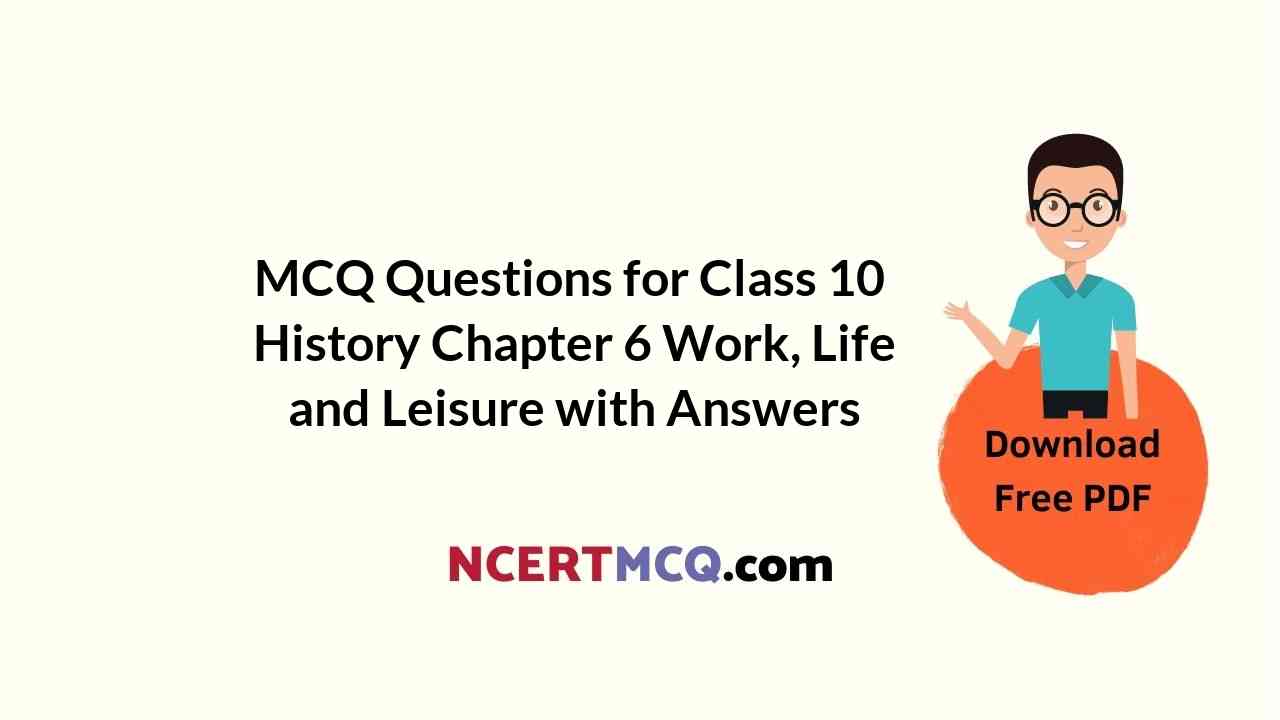Check the below NCERT MCQ Questions for Class 10 History Chapter 6 Work, Life and Leisure with Answers Pdf free download. MCQ Questions for Class 10 Social Science with Answers were prepared based on the latest exam pattern. We have Provided Work, Life and Leisure Class 10 History MCQs Questions with Answers to help students understand the concept very well. https://ncertmcq.com/mcq-questions-for-class-10-social-science-with-answers/
Class 10 Social Science History Chapter 6 MCQ With Answers
History Class 10 Chapter 6 MCQs On Work, Life and Leisure
Choose the correct option:
MCQ Questions For Class 10 Icse History Chapter 6 Question 1.
Who wrote The Bitter Cry of Outcast London?
(a) Durgacharan Ray
(b) Andrew Mearns
(c) Thomas Hardy
(d) Charles Dickens
Answer
Answer: (b) Andrew Mearns
Class 10 History Chapter 6 MCQ With Answers Question 2.
The name of Baron Haussmann is associated with
(a) London
(b) Tokyo
(c) New York
(d) Paris
Answer
Answer: (d) Paris
Icse Class 10 History Chapter 6 MCQ With Answers Question 3.
Which one of the following was not a Presidency city?
(a) Calcutta
(b) Bhopal
(c) Madras
(d) Bombay
Answer
Answer: (b) Bhopal
MCQ Questions For Class 10 Icse History Question 4.
Chartism was a movement for
(a) equal pay for equal work
(b) adult male franchise
(c) limited hours of work
(d) women franchise
Answer
Answer: (b) adult male franchise
Question 5.
The city of Bombay Improvement Trust was established in the year
(a) 1898
(b) 1918
(c) 1921
(d) 1925
Answer
Answer: (a) 1898
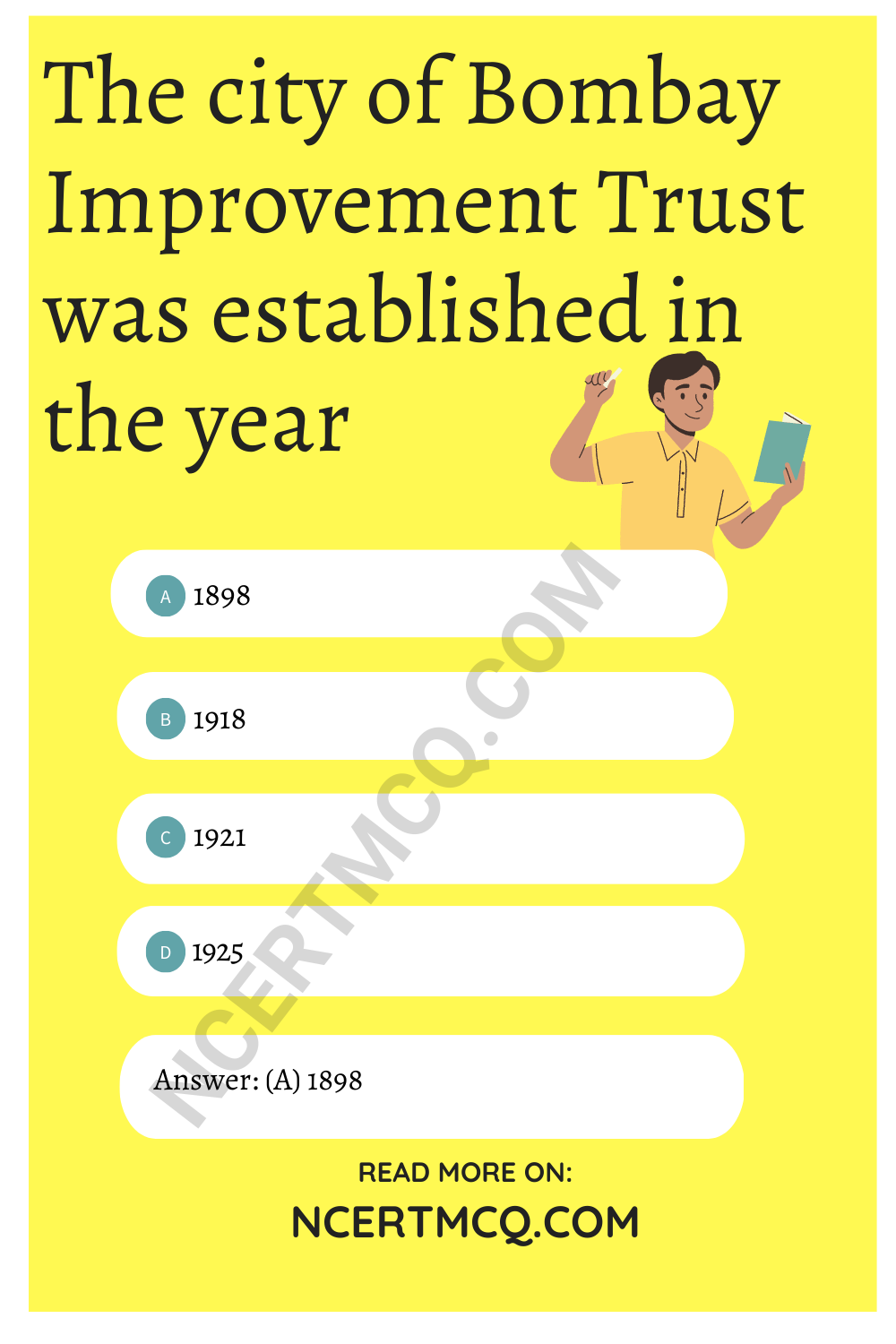
Question 6.
Bombay was a group of seven islands under the
(a) British control
(b) French control
(c) Portuguese control
(d) Dutch control
Answer
Answer: (c) Portuguese control
Question 7.
The Temperance Movement aimed at
(a) developing new lungs for the city of London
(b) cleaning up London
(c) reducing consumption of alcoholic drinks amongst the working class
(d) recognising the need for housing for the poor.
Answer
Answer: (c) reducing consumption of alcoholic drinks amongst the working class
Question 8.
Dombey and Son was written by
(a) Martin Luther
(b) R.L. Stevenson
(c) Thomas Hardy
(d) Charles Dickens
Answer
Answer: (d) Charles Dickens
Question 9.
Which one of the following is not a characteristic of a city?
(a) Centre of intellectual activities
(b) Centre of Trade and Industry
(c) Homogenous population
(d) Hub of political and economic activities
Answer
Answer: (c) Homogenous population
Question 10.
What does Mayapuri mean to Bombay?
(a) A city of life
(b) A city of dreams
(c) A city of happenings
(d) A city of slums
Answer
Answer: (b) A city of dreams
Question 11.
What were the Presidency cities in India?
(a) Bombay
(b) Madras
(c) Calcutta
(d) All of the above
Answer
Answer: (d) All of the above
Explanation:
Presidency cities in India in the early 19th century were Bombay, Calcutta and Madras. These were multi-functional cities; they had major ports, warehouses, homes and offices, army camps, as well as educational institutions, museums and libraries.
Question 12.
In the late 18th century, how did the working class people spent their holidays?
(a) Dancing at home
(b) Eating and spending time at home
(c) In visiting museum
(d) Meeting in pubs
Answer
Answer: (d) Meeting in pubs
Explanation:
The working class people spent their holidays and leisure time in the late 18th century by meeting in pubs for a drink, exchanging news and sometimes organising a political action.
Question 13.
When did the first section of the Underground railways in the world opened?
(a) 10 January
(b) 25 march
(c) 15 April
(d) 20 May
Answer
Answer: (a) 10 January
Explanation:
The very first section of the Underground in the world opened on 10 January 1863 between Paddington and Farrington Street in London.
Question 14.
What do you mean by ‘Temperance Movement’?
(a) A movement led by the rich to stop drinking on the streets
(b) A movement in Britain and USA, aimed at reducing alcoholism amongst the working classes
(c) A movement to start alcohol free
(d) None of these
Answer
Answer: (b) A movement in Britain and USA, aimed at reducing alcoholism amongst the working classes
Explanation:
A middle-class led social reform movement in Britain and USA, aimed at reducing alcoholism amongst the working classes
Question 15.
Who was Charles Booth?
(a) A Liverpool ship owner
(b) A rich merchant
(c) A philanthropist
(d) None of these
Answer
Answer: (a) A Liverpool ship owner
Explanation:
Charles Booth was a Liverpool ship owner who conducted the first social survey of low-skilled workers in East End of London, in 1887.
Question 16.
When did the London poor exploded in a riot?
(a) 1889
(b) 1875
(c) 1886
(d) 1879
Answer
Answer: (c) 1886
Explanation:
In the severe winter of 1886, when outdoor work came to a standstill, the London poor exploded in a riot, demanding relief from the terrible conditions of poverty.
Question 17.
The industrial smoke in Calcutta is finally controlled by whom?
(a) Bengal Smoke Nuisance Commission
(b) The factory owners
(c) The Bengal government
(d) None of these
Answer
Answer: (a) Bengal Smoke Nuisance Commission
Explanation:
The inspectors of Bengal Smoke Nuisance Commission were finally controlled industrial smoke in Calcutta. Controlling domestic smoke, however, was far more difficult.
Question 18.
What do you means by ‘Akharas’?
(a) A place for exchange of news
(b) Meeting areas for businessman
(c) Traditional wrestling schools
(d) None of these
Answer
Answer: (c) Traditional wrestling schools
Explanation:
Traditional wrestling schools, located in every neighbourhood, where the young were trained to ensure both physical and moral fitness.
Question 19.
What do you mean by “Reclamation”?
(a) To take back land from the rich
(b) To reclaim marshy or submerged areas
(c) Force to donate haves land
(d) None of these
Answer
Answer: (b) To reclaim marshy or submerged areas
Explanation:
Reclamation means to reclaim marshy or submerged areas or other wasteland for settlements, cultivation or other use.
Question 20.
When was the Bombay came under the control of the British?
(a) Bombay was given as a part of dowry to England
(b) Bombay was captured by British
(c) Portuguese sold it to the British
(d) None of these
Answer
Answer: (a) Bombay was given as a part of dowry to England
Explanation:
Bombay came under the control of the British when King Charles II, the king of Britain, married the Portuguese princess and Bombay was given as a part of dowry to England in 1661.
Question 21.
How could the problem of scarcity of land in Bombay be solved?
(a) By high-rise buildings
(b) Through massive reclamation projects
(c) By sending migration people to their original homes
(d) None of these
Answer
Answer: (b) Through massive reclamation projects
Explanation:
The problem of scarcity of land in Bombay can be solved through massive reclamation projects. The earliest project began in 1784.
Question 22.
What was Chartism a movement for?
(a) For children below 18
(b) For women
(c) For adult male franchise
(d) None of these
Answer
Answer: (c) For adult male franchise
Explanation:
Political movements of the nineteenth century, was Chartism a movement demanding the vote for all adult males and the 10-hour movement.
Question 23.
Which sub-urban of Bombay was the mill village?
(a) Thane
(b) Girangaon
(c) Kalyan
(d) None of these
Answer
Answer: (b) Girangaon
Explanation:
About 90 per cent of millworkers were housed in Girangaon, a ‘mill village’ was not more than 15 minutes’ walk from the mills.
Question 24.
What do you mean by Mayapuri (Bombay)?
(a) A city of businessman
(b) A city of slums
(c) A city of dream
(d) None of these
Answer
Answer: (c) A city of dream
Explanation:
Its massive overcrowding and difficult living conditions, Bombay appears to many as a ‘mayapuri’ – a city of dreams.
Question 25.
Name the first movie made by Dada Saheb Phalke?
(a) Bombay
(b) Poorv aur Paschim
(c) C.I.D
(d) Raja Harishchandra
Answer
Answer: (d) Raja Harishchandra
Explanation:
Dadasaheb Phalke made Raja Harishchandra (1913). After this movie, there was no turning back. By 1925, Bombay had become India’s film capital, producing films for a national audience.
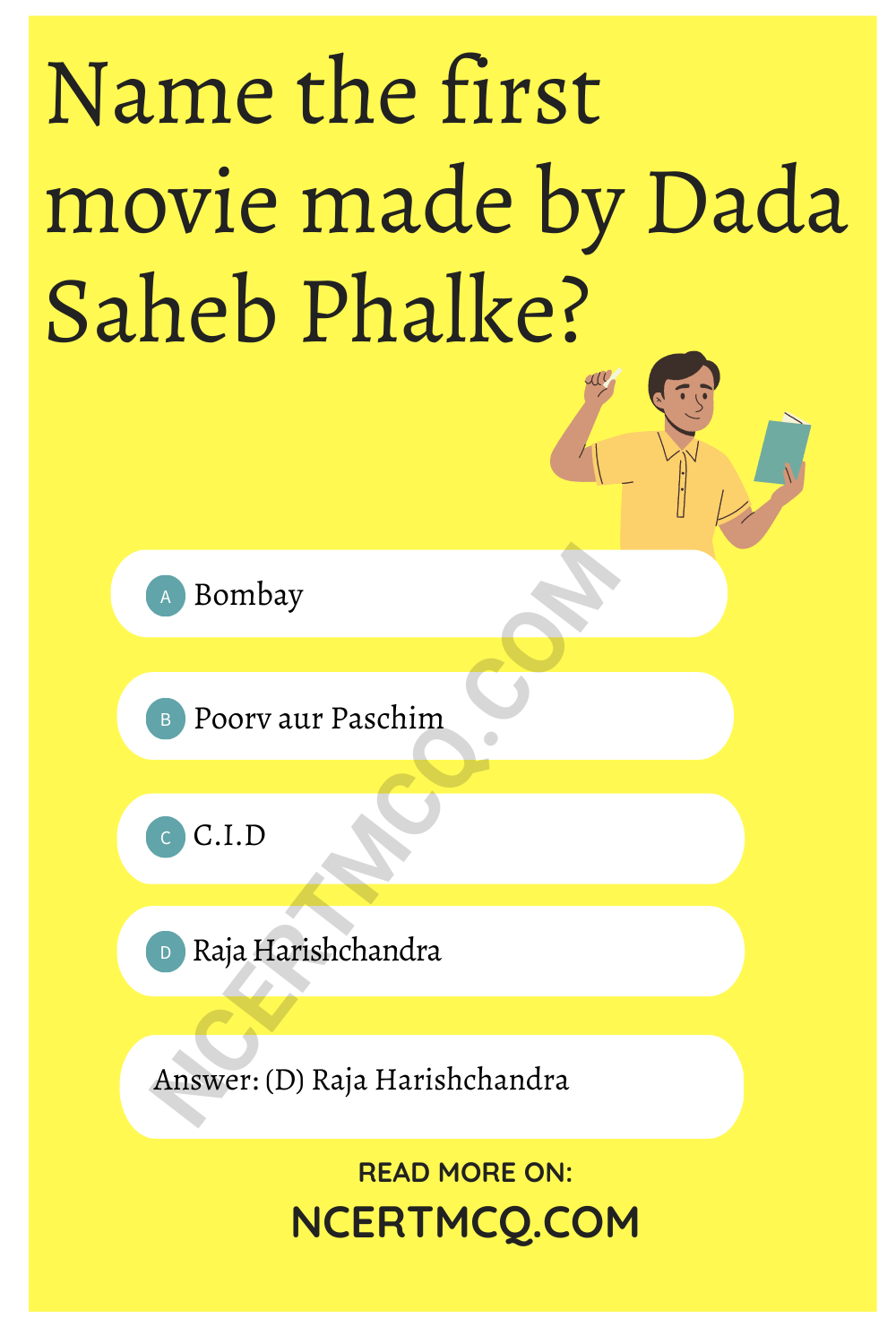
Picture-based Questions:
Question 1.
Look at the given picture taken from Textbook Page 148 and then answer the questions that follow:
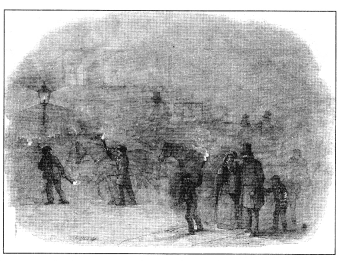
Describe the above picture. Which problem has been highlighted here?
Answer
Answer:
The above picture highlights the problem of air pollution in the mid-nineteenth century London. Smoke from burning of coal, in industries and in homes, covered London in such a way that it was difficult for the inhabitants to breathe air or see the road. The skies looked grey and all vegetation was black.
Question 2.
Look at the given picture taken from Textbook Page 145 and then answer the questions that follow:
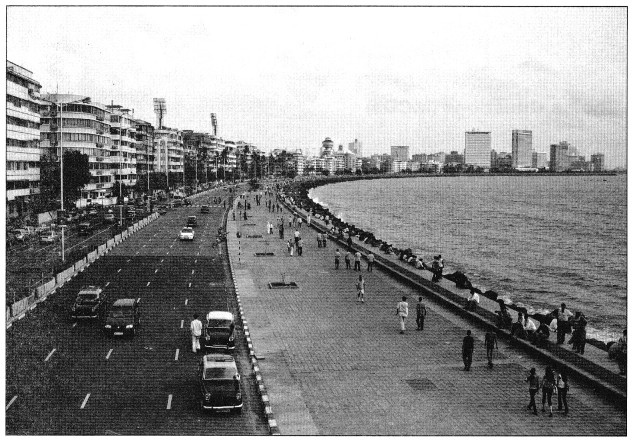
(i) What is it?
(ii) How was it built? When?
Answer
Answer:
(i) It is the famous Marine Drive of Bombay. It is the landmark of the city.
(ii) It was built on land reclaimed from the sea in the early twentieth century.
We hope the given NCERT MCQ Questions for Class 10 History Chapter 6 Work, Life and Leisure with Answers Pdf free download will help you. If you have any queries regarding Work, Life and Leisure CBSE Class 10 History MCQs Multiple Choice Questions with Answers, drop a comment below and we will get back to you soon.
Class 10 Social Science History MCQ:
- The Rise of Nationalism in Europe Class 10 MCQ
- The Nationalist Movement in Indo-China Class 10 MCQ
- Nationalism in India Class 10 MCQ
- The Making of Global World Class 10 MCQ
- The Age of Industrialisation Class 10 MCQ
- Work, Life and Leisure Class 10 MCQ
- Print Culture and the Modern World Class 10 MCQ
- Novels, Society and History Class 10 MCQ
